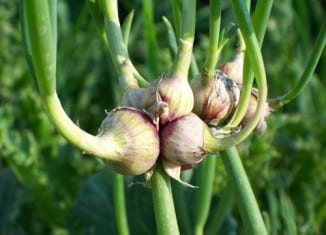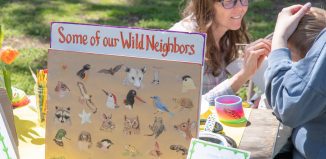Establishing perennial vegetable beds
By Ellen Barcel
When growing fruit in the garden, we generally think of shrubs (blueberries, raspberries etc.) and trees (apple, peach, pears etc.), rarely annuals. But, when it comes to veggies, it’s sort of the opposite — we think of annuals (tomatoes, corn, green beans, radishes, lettuce etc.), which need to be replanted every year.
But, there are veggies that are perennials, veggies where you establish a bed of them and they return year after year. I’ve said it before, I really like the “plant once and enjoy for many years” form of gardening. First, some things to be aware of when establishing certain veggies in beds:
• Select a sunny site with well-drained soil.
• Many perennial veggies produce poorly or not at all in the first year since they’re just becoming established. So, think of perennial veggies as a multiyear project. Once established this year, some will produce for 20, 30 or more years.
• Amend the soil with compost and test it to make sure it is the proper pH and has enough nutrients to support the crops you want to grow.
• Remember to water, fertilize and weed throughout the growing season, even after you’ve harvested, or you’ll have a poor crop the next year.
• There are ways to make the veggie bed look attractive: Make it a raised bed with stones around it, for example, and plant some attractive flowers around the bed as well. Make sure the flowers don’t shade out the vegetable crop.
• If you are setting up a bed for several varieties of plants, make sure that they all have similar requirements.
• Mulch helps to keep weeds out of these beds and helps to keep moisture in the soil.
Some perennial veggies to consider for your garden include:
Asparagus (Asparagus officinalis) is a spring vegetable, native to Europe, Asia and Africa. There are a number of varieties, including white. Plant the asparagus crowns in early spring, as soon as the soil can be worked. They do particularly well in a raised bed. Gardener’s Supply Company notes that “it’s critical to eradicate all the weeds and grasses from the planting area — even if this requires a full year of advance preparation.” As I said above, growing perennial vegetables is a multiyear commitment. Harvest in spring and early summer. Once this time frame has passed, allow the plants to continue growing. They will produce lacy foliage that can be four or more feet all. The better care you take of the plants at this time, the more prolific they will be next year. Cut back in fall and wait till next spring for a healthy crop.
Egyptian walking onions (Allium proliferum) are cold hardy. Sometimes called winter onions, tree onions or perennial onions they produce bulblets at the end of the stalk where flowers would normally form, not underground. When the stalk bends over and touches the ground, the bulblets will take root, establishing a new plant, hence the name walking onions — they seem to walk across the ground. They come out in early spring, sometimes even through the snow. Once you harvest a plant it will not grow back, but since each plant can produce so many bulblets on many stalks, as long as you don’t harvest all of every plant, you’ll have plenty for the future. They grow in zones 3 to 9 (Long Island is 7). These perennial onions can be found in a number of catalogs. Go to www.egyptianwalkingonions.com for further information.
Horseradish (Armoracia rusticana) is in the same family as mustard, broccoli and cabbage. The roots are used as a spice, particularly for red meat, chicken and fish. It does well in hardiness zones 2 through 9. In the fall, the roots are dug up, some kept for consumption and one main root replanted for next year’s crop. Alternately, only dig up some of your plants. The Horseradish Council (www.horseradish.org) has many recipes for using this delicious but hot spice.
Rhubarb (Rheum rhabarbarum) is botanically a veggie, although it’s used as a fruit, particularly with strawberries, in sweet pies and jams. It’s planted in a similar way to asparagus. Prep the soil, removing all grasses and weeds and plant the crowns in early spring. Don’t expect much of a crop the first year. When harvesting, leave at least some stalks on each plant so it will thrive for the next year. While the plants will produce enormous leaves, remember, it is the red stalks that are edible, not the toxic leaves. A high nitrogen fertilizer is recommended when the ground has just thawed. The rhizomes of rhubarb plants can be divided every three to four years when the plants are dormant.
There are other perennial vegetables, including artichokes and Jerusalem artichokes. And yes, strawberries (which are a fruit) are established in beds as well.
Ellen Barcel is a freelance writer and master gardener. Send your gardening questions and/or comments to [email protected]. To reach Cornell Cooperative Extension and its Master Gardener program, call 631-727-7850.







